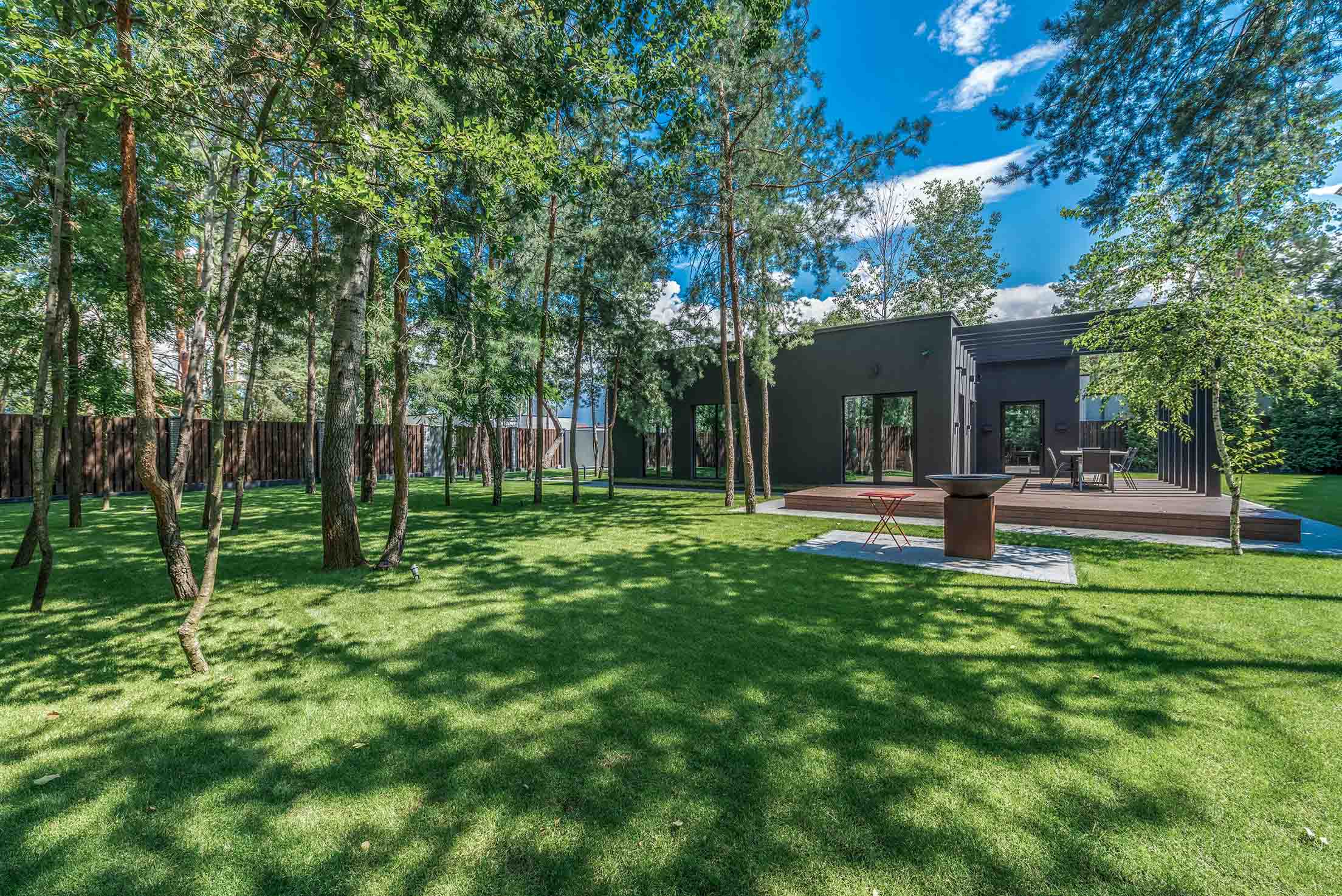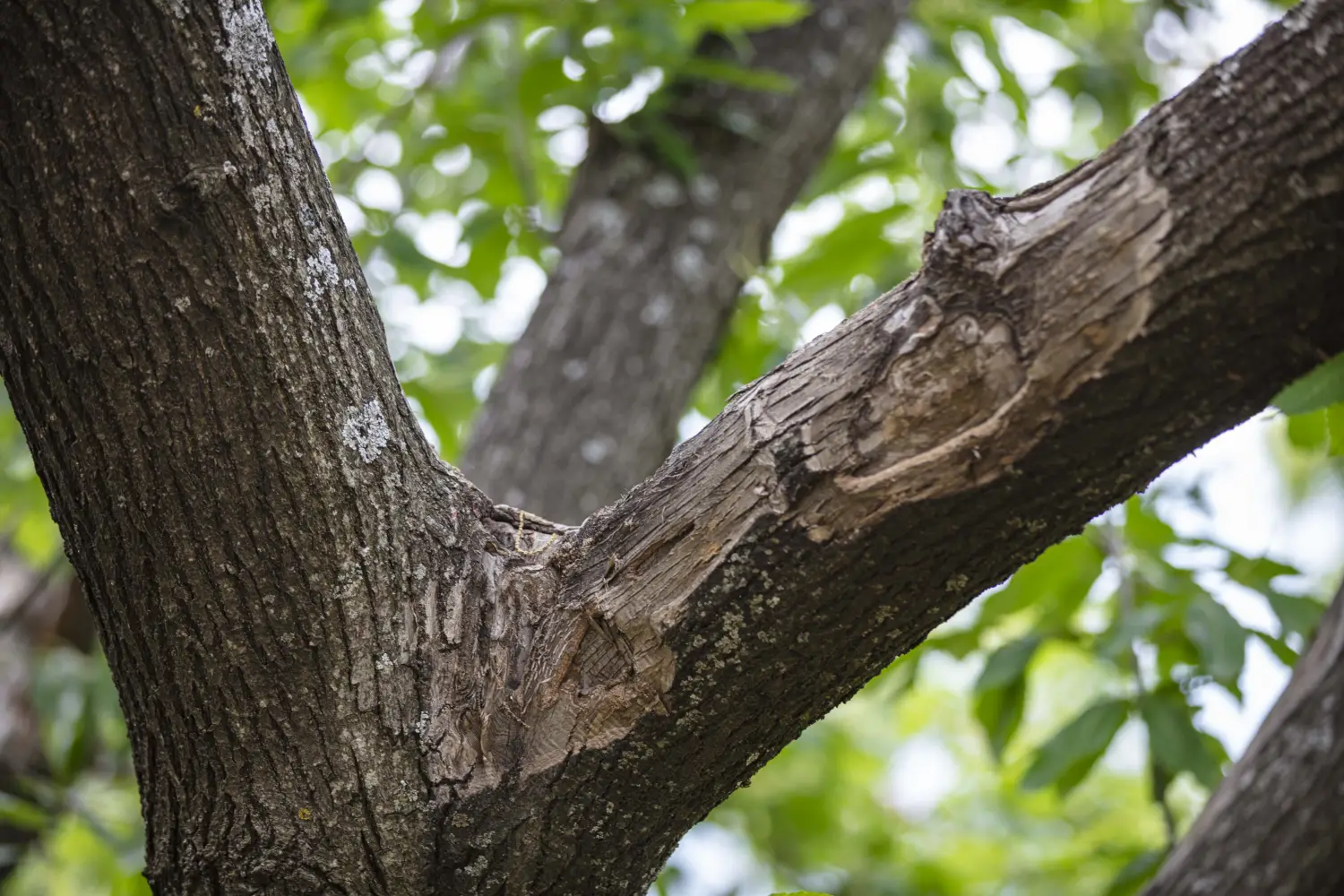Protecting Your Trees from Common Diseases in Georgia
Maintaining healthy trees in Atlanta’s unique climate requires proactive care to prevent diseases that can damage or destroy your landscape.
By understanding common tree diseases in Atlanta, implementing best practices for Atlanta tree care, and using the best treatments for tree diseases in Georgia, you can keep your trees thriving year-round. Here’s a comprehensive guide to help you safeguard your trees.
Understand Common Tree Diseases in Atlanta
Atlanta’s humid subtropical climate creates a breeding ground for fungal, bacterial, and viral tree diseases. Some prevalent tree diseases in Atlanta include:
- Anthracnose: A fungal disease affecting sycamores, oaks, and dogwoods, causing leaf spots, wilting, and premature leaf drop. It thrives in wet, cool springs.
- Powdery Mildew: Common on crape myrtles and oaks, this fungal disease appears as white, powdery spots on leaves, reducing photosynthesis.
- Fire Blight: A bacterial disease impacting fruit trees like pears and apples, causing blackened, wilted shoots that resemble fire damage.
- Root Rot: Caused by fungi like Armillaria or Phytophthora, this disease affects trees like pines and hardwoods, leading to wilting, stunted growth, and tree death.
- Oak Wilt: A deadly fungal disease affecting oak trees, causing rapid leaf browning and tree decline, especially in red oaks.
Recognizing symptoms early—such as discolored leaves, unusual growths, or dieback—allows for timely intervention to prevent disease spread.
Year-Round Atlanta Tree Care Tips
Preventing tree diseases in Atlanta requires consistent care tailored to Georgia’s seasons. Follow these tips to strengthen your trees’ natural defenses:
Spring: Boost Tree Health
- Prune Properly: Remove dead or diseased branches using sterilized tools to prevent fungal spread. Prune during dry weather to minimize infection risk.
- Fertilize Wisely: Apply a balanced, slow-release fertilizer to promote vigor, but avoid over-fertilizing, which can stress trees and attract pests.
- Mulch Correctly: Add 2-4 inches of organic mulch around the tree base (keeping it away from the trunk) to retain moisture and regulate soil temperature. This reduces stress and prevents fungal growth.
Summer: Monitor and Water
- Water Deeply: Atlanta’s hot summers can stress trees. Water deeply once a week during dry spells, focusing on the root zone, to prevent drought-related diseases like root rot.
- Inspect Regularly: Check for signs of powdery mildew or anthracnose, especially after heavy rains. Early detection allows for quicker treatment.
- Control Pests: Insects like aphids or borers can weaken trees, making them susceptible to disease. Use insecticidal soap or consult an arborist for targeted treatments.
Fall: Prepare for Dormancy
- Clean Up Debris: Rake fallen leaves and remove plant debris to eliminate fungal spores that overwinter and spread diseases like anthracnose.
- Apply Fungicides: For trees prone to fungal diseases, apply preventative fungicides (e.g., chlorothalonil for anthracnose) as recommended by a professional.
- Aerate Soil: Compacted soil can stress roots and promote root rot. Aerate the soil around trees to improve drainage and oxygen flow.
Winter: Protect and Plan
- Wrap Young Trees: Protect thin-barked trees like maples or dogwoods from sunscald by wrapping trunks with tree guards.
- Plan for Spring: Schedule a professional tree inspection to identify potential disease risks before the growing season begins.
- Avoid Winter Pruning for Oaks: Pruning oaks in winter can attract beetles that spread oak wilt. Wait until late spring or summer for oak pruning.
Best Treatments for Tree Diseases in Georgia
When prevention isn’t enough, prompt treatment can save your trees. Here are the best treatments for tree diseases in Georgia:
- Fungicides: For fungal diseases like powdery mildew or anthracnose, apply fungicides such as copper-based sprays or systemic treatments. Timing is critical—apply before or at the first sign of disease.
- Antibiotics: For bacterial diseases like fire blight, streptomycin injections or sprays can help, but they’re most effective when applied early by professionals.
- Cultural Practices: Improve drainage to combat root rot by redirecting water or installing French drains. Remove infected roots or soil if possible.
- Tree Injections: For diseases like oak wilt, systemic injections of fungicides like propiconazole can slow disease progression, though they work best as a preventative measure.
- Professional Removal: In severe cases, such as advanced oak wilt or root rot, removing the infected tree may be necessary to protect nearby trees.
Always consult a certified arborist for accurate diagnosis and treatment plans, as misapplication of chemicals can harm trees or the environment.
Additional Tips for Atlanta Tree Care
- Choose Resistant Species: Plant disease-resistant trees like certain oak hybrids or crape myrtle cultivars to reduce disease risk.
- Improve Air Circulation: Space trees appropriately and thin dense canopies to reduce humidity and fungal growth.
- Hire Professionals: Regular inspections by a certified arborist can catch problems early. Search for “Atlanta tree care services” to find local experts.
Final Thoughts
Preventing tree diseases in Atlanta requires year-round vigilance and tailored care. By understanding the common tree diseases in Atlanta, following seasonal Atlanta tree care practices, and applying the best treatments for tree diseases in Georgia, you can protect your trees from harm.
Stay proactive, monitor your trees regularly, and consult professionals when needed to ensure a healthy, vibrant landscape.

